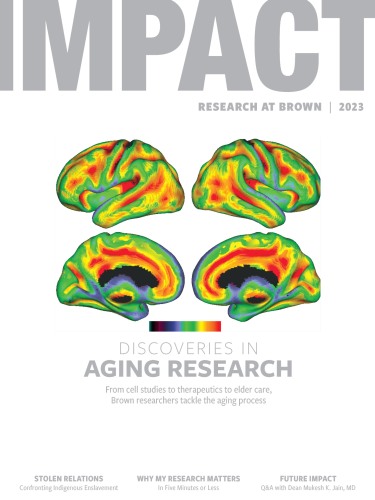Seen and Herd
Cognitive scientists bring a fresh new perspective to predicting crowd behavior.
Cognitive scientists bring a fresh new perspective to predicting crowd behavior.
Like flocks of birds or schools of fish, crowds of humans also tend to move en masse—almost as if they’re thinking as one. Scientists have proposed different theories to explain this type of collective pedestrian behavior.
A new model from researchers at Brown that takes the point of view of an individual crowd member is remarkably accurate at predicting actual crowd flow, its developers say.
The model, described in a Proceedings of the Royal Society B: Biological Sciences paper, illustrates the role of visual perception in crowd movement. It shows how crowd members who are visible from a participant’s viewpoint determine how that participant follows the crowd and what path they take. The paper is based on an idea developed by the paper’s co-author Gregory Dachner, who earned his PhD at Brown in 2020.
The new approach is a departure from previous models, which operate from the point of view of an omniscient observer, said study author William H. Warren, a professor of cognitive, linguistic, and psychological sciences at Brown.
“ We are the first group to provide a sensory basis for this type of coordinated movement. The model provides a better understanding of what individuals in a crowd are experiencing visually, so we can make better predictions about how an entire group of people will behave. ”
In a series of experiments that involved tracking the movements of people wearing virtual reality headsets, researchers in Warren’s lab could predict an individual’s movement based on their view of a virtual crowd.
When the researchers used the experiment results to create a new theory of collective motion, it successfully predicted individual trajectories in both virtual crowd experiments and real crowd data.
Warren said that models on crowd movement can be used to inform the design of public spaces, transportation infrastructure, and emergency response plans.
“We are the first group to provide a sensory basis for this type of coordinated movement,” Warren said. “The model provides a better understanding of what individuals in a crowd are experiencing visually, so we can make better predictions about how an entire group of people will behave.”
